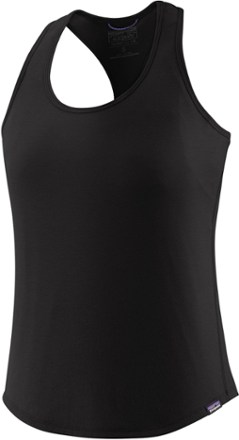Car camping with family or friends is a summer pastime for many of us. Whether the campground itself is the main attraction or it's simply your base camp for nearby activities, this article will help you find the right camping tent—your home away from home. (Prefer backcountry camping? See the REI Expert Advice article, Backpacking Tents: How to Choose.)
Video: How to Choose a Camping Tent
Tent Sleeping Capacity
When choosing your tent, first choose a model based on your group's size and whether or not you might need additional space for extra friends, gear or dogs. Keep in mind, however, that no industry standard exists that defines per-person tent dimensions.
When evaluating tent capacity ratings, our general advice is this: Assume a close fit. If you seek more room, consider upsizing your tent capacity by 1 person, particularly if you or your usual tent companion(s):
- are large people
- are claustrophobic
- toss and turn at night
- sleep better with more than average elbow room
- are bringing a small child or a dog
Tents Seasonality
3-Season Tents
By far the most popular choice of tents, 3-season tents are lightweight shelters designed for the relatively temperate conditions of spring, summer and fall. They are usually equipped with ample mesh panels to boost air flow. Mesh panels keep out insects (but can still let in powdery blowing sand). Properly pitched with a taut rainfly, 3-season tents can withstand downpours but are not the best choice for sustained exposure to harsh storms, violent winds or heavy snow.
The primary functions of 3-season tents:
- Keep you dry during rain or light snow.
- Shield you from bugs.
- Provide privacy.
3- 4-Season Tents
Extended-season (3+ season) tents are engineered for prolonged 3-season usage, suitable for summer use but also trips in early spring and late fall when moderate snow may be encountered. Their goal: offer a balance of ventilation, strength and warmth-retention.
Typically they include 1 or 2 more poles and fewer mesh panels than pure 3-season models. This makes them sturdier and warmer than their 3-season cousins. Extended-season tents are a good choice for those who make frequent trips to exposed, high-elevation destinations. While very sturdy, they are not as fully fortified for harsh winter weather as 4-season tents.
4-Season Tents
Engineered to withstand fierce winds and substantial snow loads, mountaineering tents can be used in any season. Their chief function, though, is to stand firm in the face of seriously inhospitable weather, principally in winter or above treeline.
They use more poles and heavier fabrics than 3-season tents. Their rounded dome designs eliminate flat roof spaces where snow can collect. They offer few mesh panels and rainflies that extend close to the ground. This hinders ventilation and can make them feel warm and stuffy in mild weather. But when foul winds begin to howl, a 4-season tent provides a reassuring place of refuge.
Key Tent Features
Peak Height
If you like being able to stand up when changing clothes or enjoy the airiness of a high ceiling, then look for a tent with a tall peak height (listed in the spec charts).
Cabin-style tents feature near-vertical walls to maximize overall peak height and livable space, (and some models come with family-pleasing features such as room dividers and an awning, or a vestibule door that can be staked out as such).
Dome-style tents offer superior strength and wind-shedding abilities, both of which you'll appreciate on a stormy night. They stand tall in the center, but their walls have more of a slope which slightly reduces livable space.
Tent Floor Length
If you're tall (over 6 feet) or like additional space, consider a tent with a floor length of 90 inches (rather than the more typical 84-88 inches).
Tent Doors
When choosing your tent, think about the number of doors you need as well as their shape and orientation. If you're camping with your family, multiple doors help you avoid climbing over each other for midnight bathroom breaks. Cabin-style tents tend to shine in this area. Also note how easy or noisy the doors are to zip open and shut. YKK zippers on the doors resist snagging and breaking better than others.
Tent Poles
A tent's pole structure helps determines how easy or hard it is to pitch. Virtually all family tents these days are freestanding. This means they do not require stakes to set up. The big advantage of this is that you can pick the tent up and move it to a different location prior to staking. You can also easily shake dirt out of it before taking it down.
Fewer poles allow faster setups. It's also easier to attach poles to clips than it is to thread them through long pole sleeves. Many tents use both clips and short pole sleeves in an effort to balance strength, ventilation and setup ease. Color-coded corners and pole clips also make setup faster. Aluminum poles are stronger and more durable than fiberglass.
Rainfly
A rainfly is a separate waterproof cover designed to fit over the roof of your tent. Use it whenever rain or dew is expected, or any time you want to retain a little extra warmth. Two rainfly types are common. Roof-only rainflies allow more light and views while offering fair rain protection. Full-coverage rainflies offer maximum protection from wind and rain.
Tent Materials
When you're shopping, be aware that higher-denier fabric canopies and rainflies are more rugged than lower-denier ones. Also, seam tape and high-denier fabrics on tent floors reduce the odds of leakage.
Vestibules / Garage
Shelters or awnings attach to your tent for the purpose of storing or sheltering your muddy or dusty boots or keeping your packs out of the rain. They can be an integral part of the rainfly or add-on items that are sold separately.
Ventilation
Mesh panels are often used in the ceiling, doors and windows of tents. This allows views and enhances cross-ventilation to help manage condensation. For hot, humid climates, seek out larger mesh panels.
Interior Loops and Pockets
A lantern loop is often placed at the top-center of a tent's ceiling for hanging a lantern. Loops on interior tent walls can be used to attach a mesh shelf (called a gear loft, sold separately) to keep small items off of the tent floor. Similarly, interior pockets help keep your tent organized.
Guyout Loops
Higher-quality tents will include loops on the outside of the tent body for attaching guy lines. Guy lines allow you to batten down the hatches—no flapping fabric—during high winds.
Optional Tent Accessories
Footprint
This is a custom-fitted groundcloth (usually sold separately) that goes under your tent floor. Tent floors can be tough, but rocks, twigs and dirt eventually take a toll. A footprint costs far less to replace than a tent. For family tents that get a lot of in/out foot traffic, this is especially useful. Also, footprints are sized to fit your tent shape exactly, so they won't catch water like a generic groundcloth that sticks out beyond the floor edges. Water caught that way flows underneath your tent and can seep through the floor fabric.
Gear Loft
Most tents come with an integral pocket or two to let you keep small items off of the tent floor. A gear loft is an optional interior mesh shelf that can tuck greater volumes of gear out of the way.
Other Nice-to-Have Accessories
- Stakes and anchors for varying site conditions
- Broom and dustpan
- Inside/outside floor mat
- Tent repair kit
- Seam sealer
- Utility cord
- Battery-powered ventilation fan




